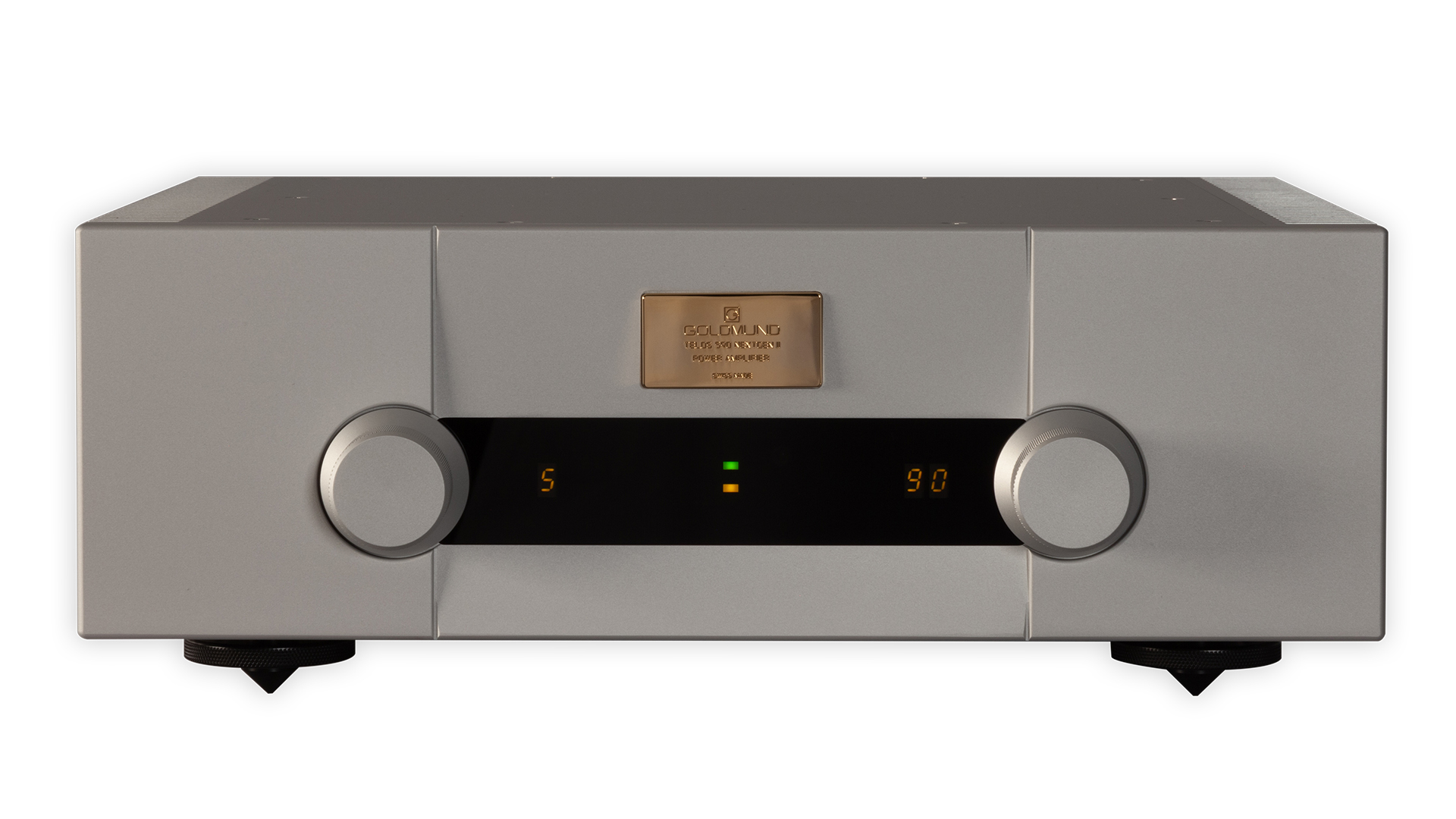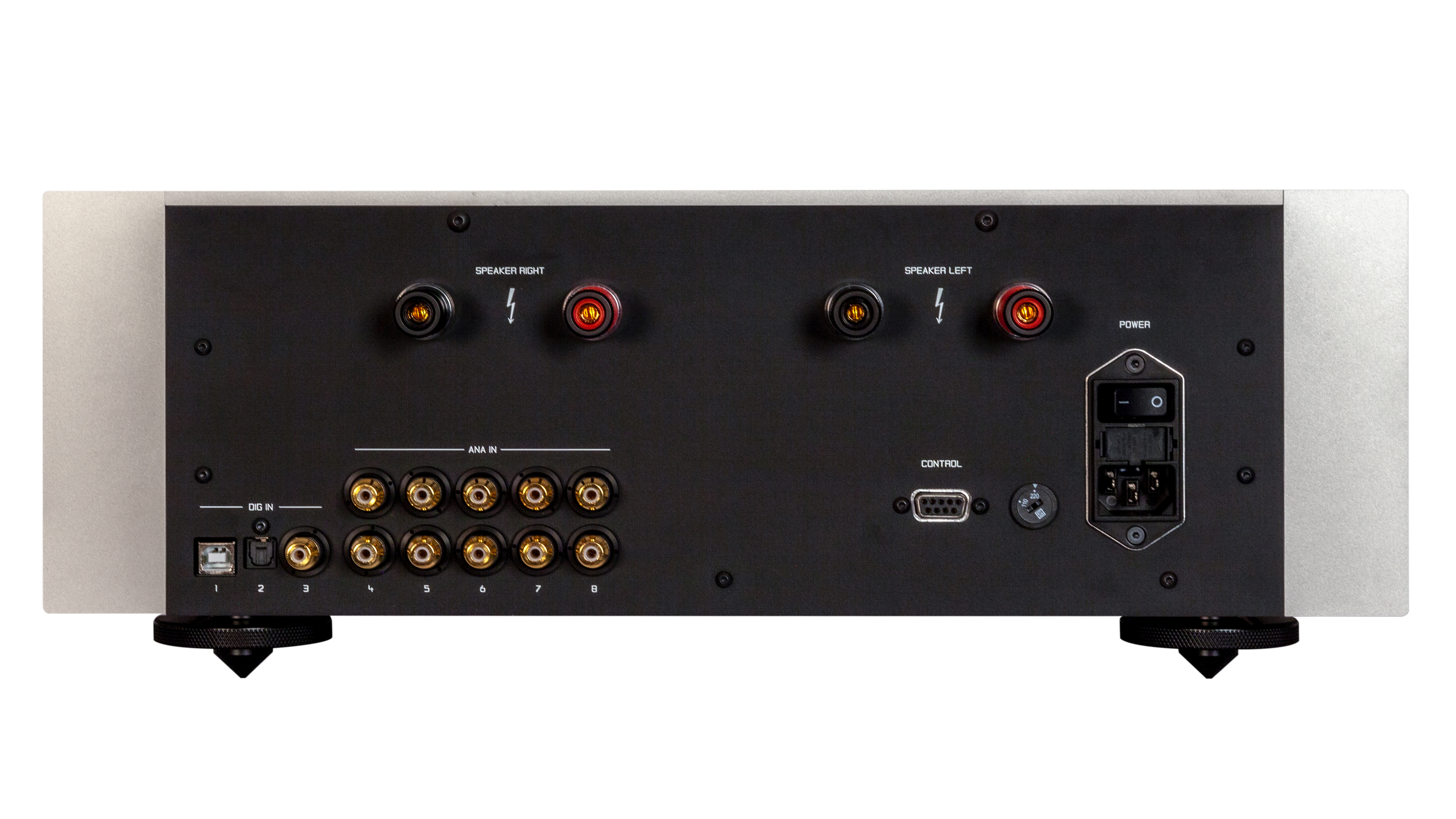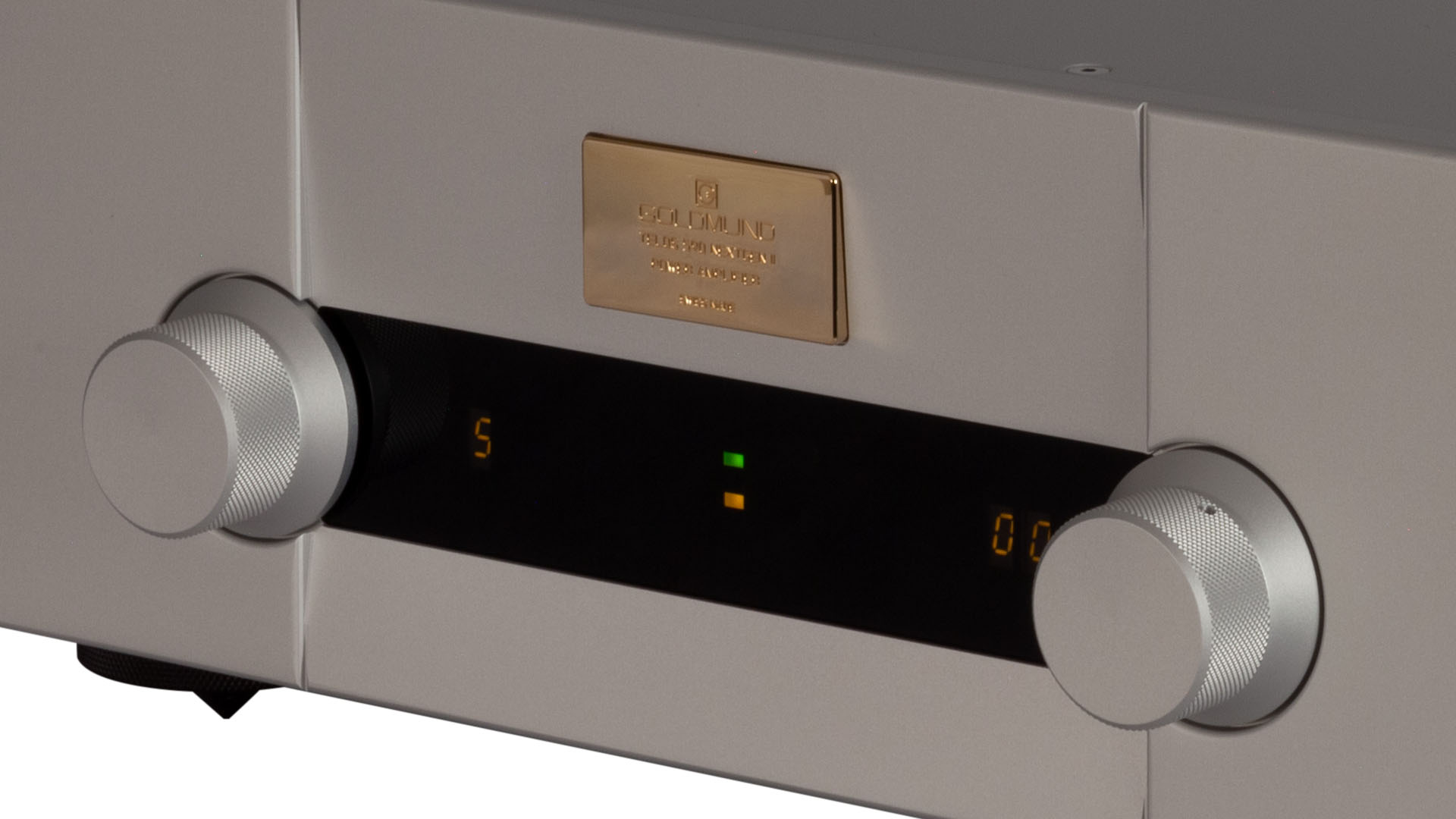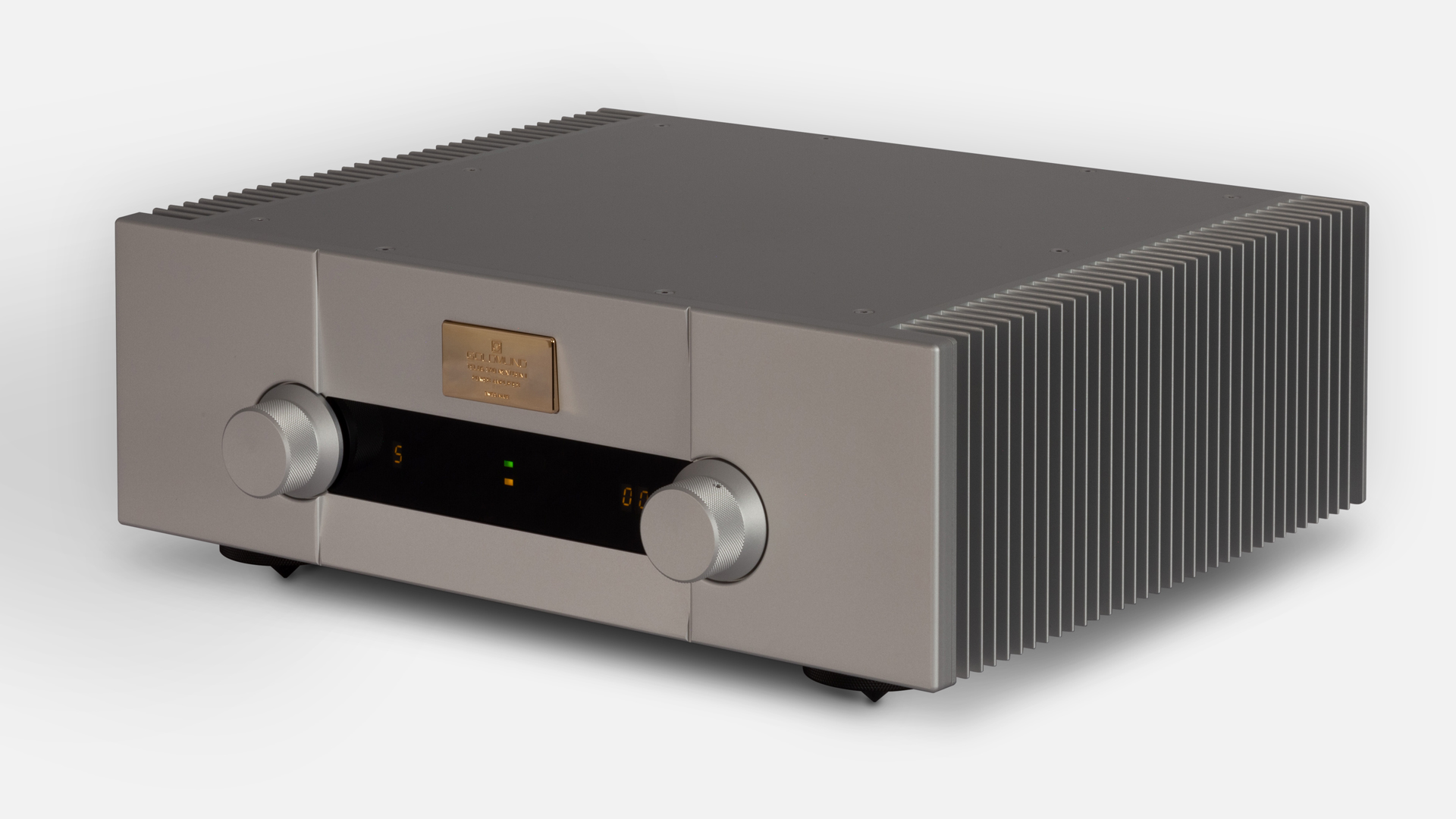What Hi-Fi? Verdict
If you think integrated amplifiers are something of a compromise, Goldmund’s Telos 590 Nextgen II is good enough to make you think again.
Pros
- +
Articulate, precise sound
- +
Outstanding clarity and cohesion
- +
Superb build and finish
- +
Good digital module
Cons
- -
No phono stage...
- -
or headphone output
Why you can trust What Hi-Fi?
Purist hi-fi enthusiasts will need little convincing that the very best systems tend to come with lots of boxes. Most high-end set-ups will certainly separate the amplifier out into its constituent preamp and power parts, possibly even splitting the latter into a pair of monoblocs to avoid unwanted interactions.
It would be no surprise to find an outboard DAC included and possibly even a phono stage if vinyl replay is part of the equation. Let’s not forget stand-alone power supplies that aim to feed specific parts of the system with clean, undistorted electricity. In all likelihood, if well engineered and designed, this mass of boxes and associated cables would sound fabulous, take up lots of space and cost pretty much the same as a decent new car.
Build

Or, for a similar outlay, you could have the Goldmund integrated amplifier we have on test here. While the product’s name is certainly a mouthful, the Telos 590 Nextgen II promises high-end enthusiasts all the sonic benefits of a traditional purist separates approach but packs preamplifier, power, digital module and a carefully honed power supply all in a single, chunky but reasonably compact case. We can’t ignore the reduced cable count either.
Many have tried this condensed approach in high-end hi-fi, but few have succeeded in convincing us that it hasn’t resulted in a compromised performance. This Goldmund integrated is one of the few exceptions.
If the price tag leads you to expect state of the art specifications you’ll be disappointed, as the headline specifications aren’t anything special. This Class A/B amplifier produces a useful 215 watts per channel into 8 ohms but only increases that modestly to 280 watts per side as impedance is halved. So, on paper at least, this isn’t a powerhouse.
On the digital side, the onboard DAC module can handle PCM files up to 32bit/384kHz and DSD64 natively, though DSD128 is on the menu when it is packaged in a PCM wrapper. All decent specs but easily matched by most outboard sub-£500 digital-to-analogue converters on the market.

Analogue inputs Five single-ended line level
Digital inputs USB, Optical Co-ax
Phono stage No
Headphone output No
Preamp output No
Output power 2x 215 RSM watts into 8 ohms
Dimensions 44 x 16.5 x 41.5cm
Weight 20kg
Goldmund is highly protective about the technology incorporated in this amplifier, so there’s little information available bar that this 590 has an ultra-wide bandwidth electronic circuit that is designed to preserve phase relationships as well as minimise any time and intermodulation distortions. The amplifier’s output impedance is claimed to be extremely low, which on paper suggests that it will keep a really firm grip of the speaker's cones. This Gen 2 model is also claimed to be even more responsive to the input signal than the previous version thanks to power supply updates, changes in circuit board layout and improvements in components and their positions.
The latest hi-fi, home cinema and tech news, reviews, buying advice and deals, direct to your inbox.
Away from the strictly electronic aspects there are elements of the physical design that Goldmund is particularly proud of. One of the big changes from the last generation of this product is the use of the impressive looking internal metal bridge that not only improves the mechanical integrity of the already solid casework but equalises any temperature differences between the amplifier’s output devices (they’re FETs, in case you wondered). The use of this bridge is claimed to offer significant sonic improvements.
Features

Moving away from the insides we’re pleased to report that the Telos 590 Nextgen II is easy to use. In many ways it’s as simple as they come, with just two rotary dials and a small but clear display on the front. The control on the left cycles through the eight inputs, five of which are single-ended stereo pairs – it seems Goldmund doesn’t see the benefit in balanced connections for this product – leaving the digital trio of USB, co-ax and optical to complete the quota. The supplied remote is small, simple and metal. As it’s dedicated to controlling just the amplifier rather than a complete system it has a minimal button count, which is pleasing.
Look around the back and there’s just a single set of high quality speaker terminals and no preamp outputs to offer a potential upgrade path. Given the all-in-one ethos behind this product, adding a power amplifier rather misses the point, we think.
Any amplifier at this level is wasted if you don’t partner it with top class components. Our sources are Naim’s ND555/555 PS DR music streamer and the Linn Klimax DSM equivalent. We also use a Technics SL-1000R record player as an analogue alternative, but have to partner that with a Cyrus Signature Phono/PSX-R2 because the Goldmund lacks a phono stage. Come to think of it, Goldmund should consider adding a headphone output too. Building in such functionality would help to make the 590 a more flexible product, and bypass the need for more boxes, something that’s surely at the heart of the appeal of such an integrated design.
We use our usual reference ATC SCM 50 speakers and the terrific PMC Fact Fenestria floorstanders for the bulk of the test, but also have fun trying out the considerably cheaper KEF LS50 Meta standmounters for a bit. The Goldmund has no trouble driving any of these speakers to high levels without sounding strained.
Sound

Ours is a well-used review sample, so takes no more than a couple of days before settling. Once it does we’re taken aback by the capabilities of this product. Every Goldmund product we’ve heard has been notably responsive and articulate and this amplifier is no different. Rarely do we come across an amp that tracks the music with such agility. There’s no sense of inertia to the sound with notes stopping and starting with class-leading precision.
As we listen to Arvo Pärt’s Tabula Rasa we’re spellbound by the amount of detail resolution this Goldmund has. It picks up the tiny details needed to render convincing instrumental textures and fills the presentation with a sense of natural warmth and weight that always eluded the previous generation model.
All this talk of detail and precision could set alarm bells ringing for those that are wary of sterile but highly detailed presentation. To those people, we say there’s no need to worry. Older Goldmund amplifiers may have erred towards the clinical, but not this one. The 590 Nextgen II sounds natural and fluid, and certainly delivers this Arvo Pärt piece with all the verve and emotional impact it deserves.
While this Goldmund’s stereo imaging isn’t the most spacious we’ve heard, there’s no denying the focus and stability in its presentation. Instruments and sounds are locked into position making it easy to place the orchestra within the recording venue. It’s a sound packed with confidence and authority.

Tonally, things are as neutral as they come. This isn’t an amplifier that flavours a recording in an attempt to make it more entertaining. There’s no added richness in the midrange to imbue voices with greater body or an added touch of emphasis at low frequencies for that extra feeling of power. This Goldmund is honest and unvarnished, just the way we like it. If the recording or source isn’t good enough, you’ll certainly know.
However, if the recording is done properly then this amplifier is capable of thumping out large-scale dynamic swings with venom. It’s a highly controlled presentation, of course, as that’s Goldmund’s way, and it's never short of composure even when things get demanding.
We switch to Kate Bush’s Hounds Of Love set and the Goldmund sounds right at home. Here it produces an energetic performance, but also offers a great deal of insight into the album’s dense and sometimes chaotic production. We’re pleased with the rhythmic drive on songs like Running Up That Hill and the amp’s wonderful musical cohesion that ensures every song hits its emotional mark.
We’re happy to report that the digital module is a good one. It doesn’t quite match the transparency and dynamic expressiveness of the line stages but still delivers excellent performances from the likes of Bruce Springsteen’s highly-charged High Hopes to the mellower Broadchurch OST from Olafur Arnalds. Regardless of the digital input used, the 590 Nextgen II continues to put in a complete performance that brims with insight and sparkle.
Verdict
Make no mistake, this Goldmund is up there with the likes of Dan D’Agostino’s Progression Integrated as one of the very best amplifiers at this level, one box or not. It's a neat, superbly made package that delivers music in an enjoyable, even handed and entertaining manner. Highly recommended.
SCORES
- Sound 5
- Build 5
- Features 4
MORE:
Read our review of the Dan D’Agostino Progression Integrated
These are the best integrated amps for every budget
What Hi-Fi?, founded in 1976, is the world's leading independent guide to buying and owning hi-fi and home entertainment products. Our comprehensive tests help you buy the very best for your money, with our advice sections giving you step-by-step information on how to get even more from your music and movies. Everything is tested by our dedicated team of in-house reviewers in our custom-built test rooms in London, Reading and Bath. Our coveted five-star rating and Awards are recognised all over the world as the ultimate seal of approval, so you can buy with absolute confidence.


